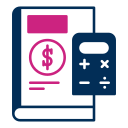
Top Bookkeeping Strategies for Canadian Freelancers: Build Clarity, Keep More, Stress Less
Chosen theme: Top Bookkeeping Strategies for Canadian Freelancers. Welcome to a practical, friendly guide designed to help you track every dollar, meet CRA expectations, and feel confident about your numbers. We’ll blend real stories, Canadian specifics, and simple habits so you can focus on great client work—while your books quietly run like clockwork.








Track Every Deductible Expense the Canadian Way
Calculate a reasonable percentage based on your workspace’s square footage relative to your home. Track eligible costs like rent, utilities, internet, and maintenance. On your T2125, allocate carefully and keep supporting documents. One Montréal translator saved significantly after measuring her space properly rather than guessing an overly cautious estimate.
Track Every Deductible Expense the Canadian Way
Maintain a mileage log with date, destination, purpose, and kilometers. Track fuel, insurance, repairs, parking, and tolls. Consistency is your best defense. A Calgary developer kept a three-month sample log each year and extrapolated; paired with receipts, it provided a defensible, time-efficient approach that the CRA accepts when done correctly.
Invoicing, Payments, and Getting Paid on Time
Set net terms, late fees, and deposit requirements in your proposals and repeat them on invoices. Summarize scope, deliverables, and revision limits. When clients know exactly how payment works, they pay faster. Add a friendly reminder schedule so nudges happen automatically without emotional energy or awkward emails.
Invoicing, Payments, and Getting Paid on Time
Offer e‑transfer, credit card, or ACH where possible, and pass fees transparently if your contract allows. Reconcile payouts to invoices weekly so nothing slips through cracks. A Halifax copywriter cut overdue balances in half by adding a pay‑now button and sending a polite reminder three days before due dates.
Invoicing, Payments, and Getting Paid on Time
If you bill in USD or EUR, decide on a conversion policy, note your currency on invoices, and record FX differences in your books. Review whether GST/HST applies under place‑of‑supply rules for non‑resident clients. Document decisions so future you—or your CPA—can easily validate them during reviews.
Set aside 25–35% of net income for income tax and CPP contributions, adjusting as your bracket changes. Park it in a separate high‑interest savings account. A Winnipeg videographer automated weekly transfers so tax cash never mixed with operating funds, turning year‑end dread into a routine, boring non‑event.
Cash Flow and Tax Planning for Peace of Mind
If the CRA asks for instalments, schedule them and align your savings transfers to match. Use your bookkeeping reports to forecast profit and adjust contributions. Paying smaller, regular amounts is easier psychologically and reduces the risk of big balances due on April 30 that disrupt your operations.
Cash Flow and Tax Planning for Peace of Mind
Automation and Tools That Save You Hours
Pick a cloud platform that supports Canadian sales taxes and bank feeds. Popular options include QuickBooks Online, Xero, and FreshBooks. Prioritize simple reporting, multi‑currency if needed, and strong mobile receipt capture. Then commit: one tool, checked weekly, beats switching constantly and losing historical consistency.

Reconcile, review, and close your books
Reconcile all bank and credit accounts, review unpaid invoices and bills, and fix odd balances. Compare this year to last for sanity checks. Export financial statements and a transaction detail report for your records. Share your biggest bookkeeping win from this year with our readers to help others improve.
Know your key dates and obligations
Self‑employed individuals generally file by June 15, but any balance is due April 30. Mark sales tax filing and remittance deadlines based on your reporting frequency. Keep your T2125 details organized, and if you operate in Quebec, note separate QST requirements. Deadlines become manageable when they live in your calendar.
Work with a CPA, stay in control
A good Canadian CPA provides guidance on deductions, sales tax, and entity decisions while your bookkeeping stays current. Share read‑only access to your software, not a shoebox of receipts. Ask questions early, not at filing time. If you want a checklist template, tell us in the comments and we’ll send it.
